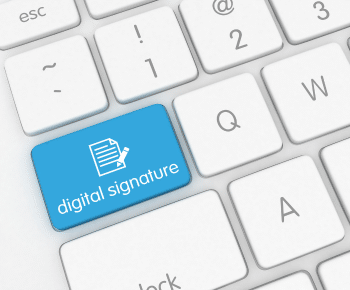
Is there a difference?
Digital signature is often used as a synonym for an electronic signature, although the two terms do not have exactly the same meaning. Both terms refer to a signature that is not on paper. Both the electronic signature and the digital signature constitute an explicit declaration of intent. However, both signature forms pursue different goals.
The electronic signature is a legal term with the aim of being legally valid. The electronic signature is defined in the European e-Signature Regulation (eIDAS). This is understood to be data associated with an identity and attached to a document.
The eIDAS defines three types of electronic signature:
- the simple electronic signature (SES),
- the advanced electronic signature (AES)
- and the qualified electronic signature (QES).
The provability of these signature types is different. Basically, the simple electronic signature has a lower level of proof than the AES and QES.
The digital signature, originally a term from computer science, serves the goal of data security. Cryptographic procedures and asymmetric encryption enable the authenticity and integrity of digital signatures. In contrast to the electronic signature, the digital signature always contains a hash value. If this is available, the electronic signature can also be understood as a digital signature.
What is a hash value?
A hash value is an alphanumeric string generated by a special mathematical hash function. This has a one-way character. This means that the same hash value is always formed from a certain string of characters, but conversely the original text cannot be calculated from the hash value. The hash value thus vouches for the integrity of the original text, so to speak, and offers protection against manipulation.How is a digital signature created?
Digital signatures use the Public Key Infrastructure (PKI) for proof of integrity. First, the sender of the document calculates a hash value. This is encoded with the private key and transmitted to the recipient. The signature then contains the encrypted hash value and the public key. The recipient decrypts the hash value with the public key and compares the values. If both results match, the integrity of the document is verified.
Of course, electronic signatures with inSign also ensure that changes to a signed document are recognised. For this purpose, checksums (hash values) are formed over the content of the document and stored together with the signature. By checking the hash value, Adobe Reader, for example, shows whether the document has been changed after signing.

About the author
Christina Detling – Online Marketing Specialist
Christina has been working at inSign for over four years and is happy to pass on her knowledge of electronic signatures and digitisation.
- Further articles
More on the topic of digital signatures



